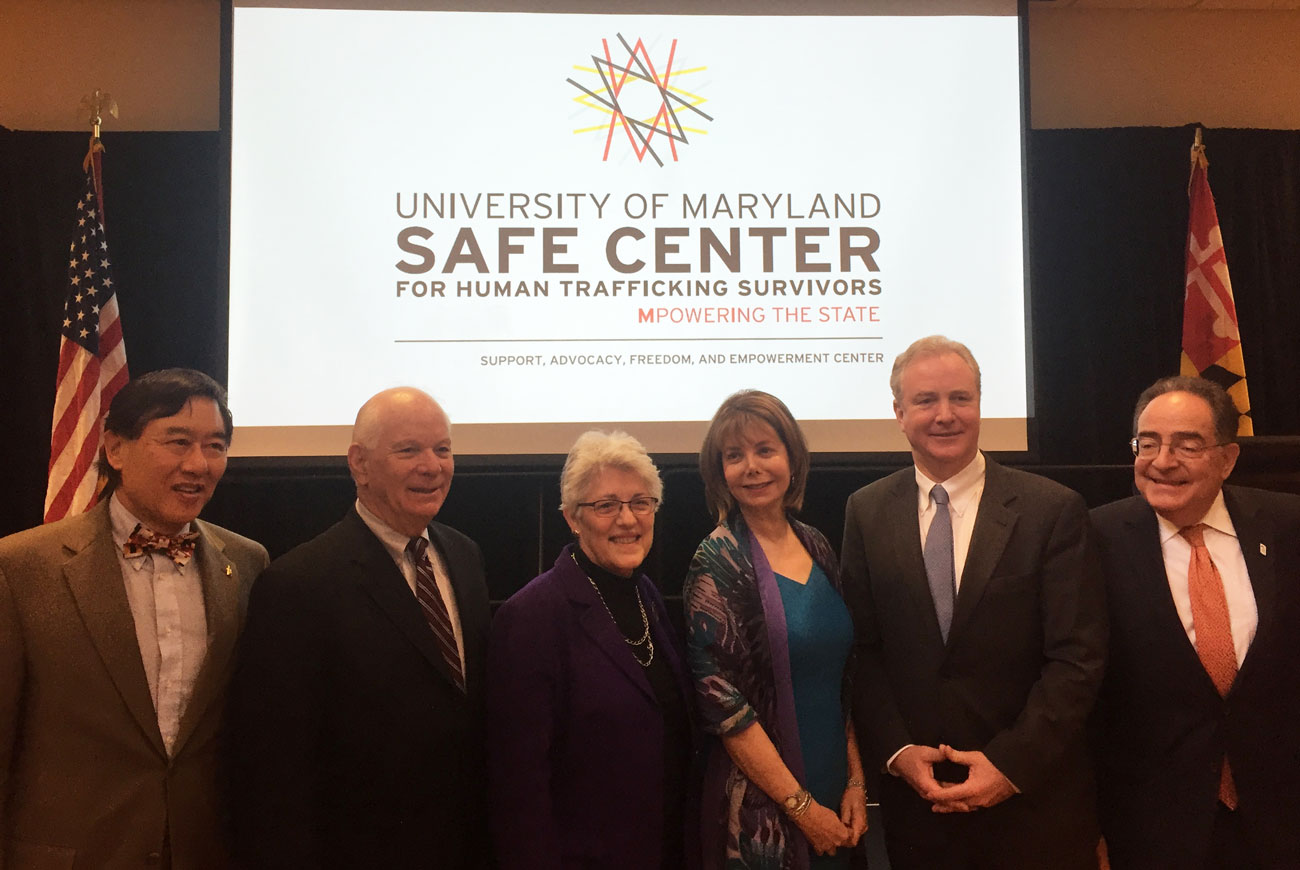COLLEGE PARK, Md. — Maryland, at the crossroads of major interstate highways, has become a hot spot for human trafficking, but many state residents do not realize the magnitude of the problem or how few services are available for victims of abuse.
The extent of human trafficking in Frederick County also is underestimated by many residents, advocates for victims say. The issue needs more exposure and community awareness, said Inga James, president of Heartly House, a nonprofit in Frederick dedicated to helping victims of sexual assault, domestic violence and child abuse.
“I think it’s a much bigger problem than we realize,” James said. “I think there’s a lot more of it going on than we’ve really been able to tap into.”
At the University of Maryland, efforts are underway to help survivors of human trafficking and to educate the community.
In collaboration with the University of Maryland, Baltimore, the College Park campus on Monday opened the Support, Advocacy, Freedom and Empowerment (SAFE) Center.
Organizers say SAFE is the nation’s first university-based center of its kind. Staff and students from university faculties, including the schools of law, social work, medicine and nursing, will work with community organizations and human trafficking task forces.
The center will provide comprehensive in-house services such as case management, legal, medical, mental health and economic support directly to survivors of human trafficking. It will also do research, scholarship and advocacy.
“It’s happening here in our own backyard,” said Susan Esserman, the center’s founder and director. “It happens here in the United States much more than people realize, and it takes a community to rebuild the survivors’ lives.”
Esserman, a partner at Steptoe & Johnson, leads the Washington law firm’s pro bono program supporting trafficking victims. Even when survivors secure legal rights, many continue to struggle with unemployment and the psychological aftermath of trauma, she said. That’s why centers like SAFE can fill the gap in healing and reintegration services. The interdisciplinary collaboration of experts from the legal, medical and criminal justice fields is critical to restoring survivors’ independence, Esserman said.
“Our center is designed to address this need by providing direct, comprehensive services to empower trafficking survivors to heal and reclaim their lives,” said Esserman, who served as deputy U.S. trade representative with the Clinton administration. “We are seeking to fill an underserved need in this immediate region.”
The only way to tackle the problem of human trafficking in Frederick County is to invest in more local support and education services like the SAFE Center, James and U.S. Rep. Chris Van Hollen, D-8th, said in interviews.
“It’s right under our nose,” James said, “and the more awareness there is, the more identification we can make and the better we can serve these people.
“I think law enforcement has difficulty sometimes identifying, with regards to adults, the difference between prostitution and being trafficked,” she said. “And so, more education and understanding about that is really critical.”
Experts in the field equate human trafficking to modern-day slavery. Anyone who has been forced or coerced into engaging in sex acts or other forms of labor under duress is a victim of human trafficking.
Since both Interstates 70 and 95 pass through Maryland, traffickers can target rest stops and places that regular travelers frequent. Unfortunately, the state has become a gold mine for human trafficking, James said.
In 2014, the Maryland Human Trafficking Task Force identified almost 400 survivors of human trafficking in Maryland, nearly double the number in 2013. U.S. citizens made up close to 98 percent of identified sex trafficking victims in 2014.
Each year, human trafficking generates more than $150 billion worldwide, according to estimates by the International Labour Organization, a United Nations agency.
“We will not defeat this globally if we don’t take action locally,” Van Hollen said. “Some of us have a tendency to think that this is a problem that is happening somewhere else … but we all know very well that it’s happening here in Maryland.”
Van Hollen said local communities such as Frederick should use the collaborative and multifaceted approach of the SAFE Center as a model to address the issue at a grass-roots level. The lessons learned from providing those services locally will inform advocacy efforts nationwide, help write legislation and aid in international efforts.
James acknowledged that the federal government is focused on human trafficking at the national level.
“I think that’s great,” she said. “But I think that needs to bleed down into the local and state economies as well. There really needs to be a lot more funding to combat this terrible, terrible thing.”


